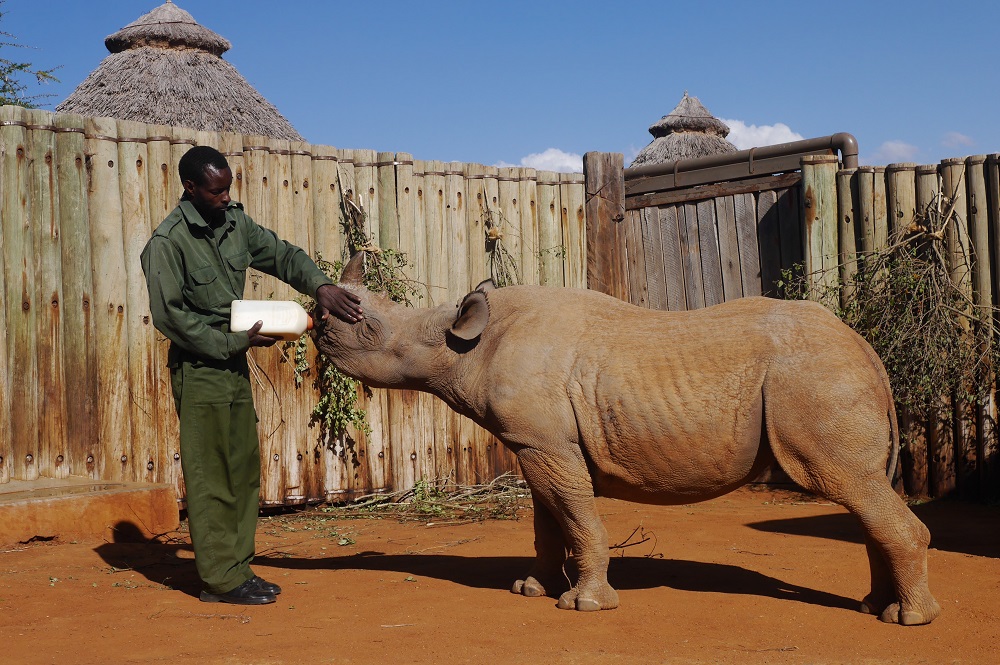Following sustained attacks by poachers, the black rhino population in Kenya declined drastically from about 20,000 in 1970 to fewer than 280 individuals in the 1980s. This catastrophic drop in numbers threatened the species’ future.
Thanks to the persistent conservation efforts, Kenya’s black rhino numbers have seen a strong recovery, with more than 700 individuals today. However, a recent spike in poaching threatened to reverse this positive trend. In 2013 Kenya lost 59 rhinos to poachers, and 35 in 2014; thankfully the spike seems to have eased off, and in 2015-17, Kenya ‘only’ saw between nine and 11 rhinos per year killed illegally for their horns.
All black rhinos in Kenya are owned by the state, so any rhinos found on private land are cared for by the private sector as guardians or custodians. To tackle the ever-present threat of poaching, the Association of Private Land Rhino Sanctuaries (APLRS) was established in 1990, improving the management of rhino on private land in collaboration with the government authorities. Heavily protected rhino sanctuaries were formed to guard rhinos against increasingly sophisticated poachers.
With conservancies’ budgets severely stretched and running costs increasing due to the need for extra security measures, there was a need to secure additional funding to continue offering high levels of rhino protection and to cover emergency costs. As there are so few black rhinos left in the wild, each individual preserved is extremely valuable. In 2010, Save the Rhino International began to support a new initiative, the APLRS Emergency Fund for Black Rhino, which reimburses APLRS members 50% of costs incurred for any unexpected response to a black rhino needing veterinary care.
Most emergency incidents involve two or more APLRS members, together with a Kenya Wildlife Service (KWS) vet. The Emergency Fund can be used for a wide range of activities; from providing veterinary care for injured rhinos, to translocating an aggressive bull or recapturing an animal that has broken through a fence. During an emergency, money is needed for many things, including truck / aircraft use, capture and vet staff, drugs, darts, veterinary care and special feed. This collaboration reinforces other joint initiatives, such as monitoring and protection and promotes best practice.
In the period from April 2017 to March 2018, the APLRS Emergency Fund helped five black rhinos needing veterinary or hand-rearing care: Patrick, Benja, Meimei, and two other calves that unfortunately died from their severe injuries.

Meimei, a female black rhino calf, was born blind at the beginning of March 2016 and had to be rescued and hand-reared. Her treatment required extensive veterinary care, with milk, antibiotics and supplements all needed to aid her growth and recovery. Thanks to the excellent care of the staff at Ol Jogi Conservancy, the infection that caused the blindness subsided within two months and Meimei fully regained her eyesight after four months of treatment.
Nurturing an orphan rhino is an expensive process but an important one. The funds from the Emergency Fund have lifted a significant economic burden from Ol Jogi Conservancy and ensured that the staff can give the very best care to rhinos like Meimei. Each black rhino in Kenya is of critical importance as far as the survival of the species is concerned.
Thanks to generous donations from our supporters and partners we have been able to continue supporting this initiative. A huge thank you to everyone helping us to champion this project and ensuring the future of black rhinos!









